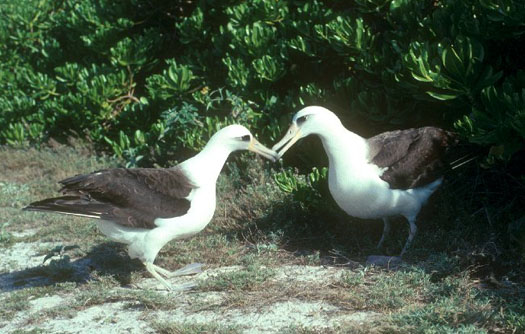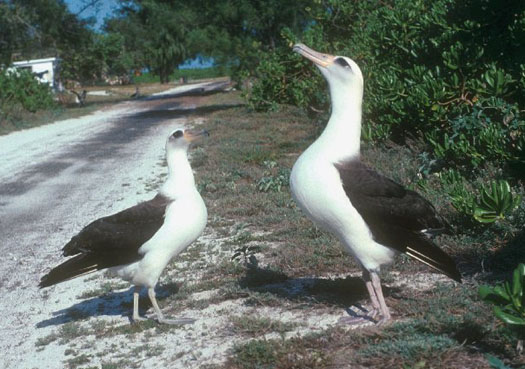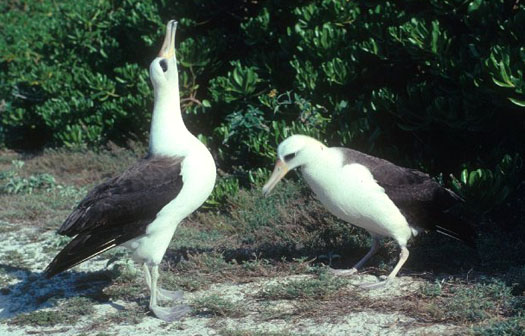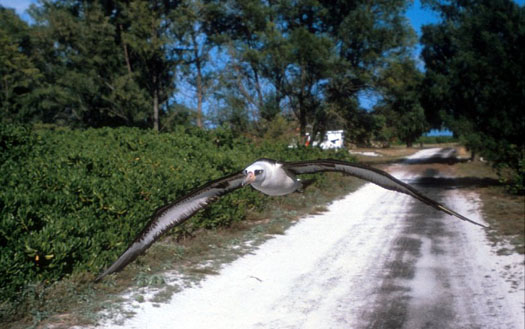
Possibly the largest bird on Kure, and one of the most abundant during nesting season, is the Laysan Albatross. They spend much of the year exclusively at sea but start coming in to the northwestern Hawaiian Islands early in the year to begin courtship, mating, and egg laying. During the season, they inhabit all the cleared areas of the island, laying their eggs on any patches of open land that lack the crowded Scaevola bushes. They even live on and alongside the two short roads and the short runway. When we flew in on a Coast Guard C130, the pilots had to make a couple of low passes over the runway to chase the birds off before they could land.
Both of my trips to the island took place during June, when the chicks were nearly full-sized and losing their down. Many were trying their wings but not getting very far. Large and heavy birds, albatross need a runway and have to take off into the wind to get airborne, and the young ones were often crashing and rolling on the ground as they learned their skills. The adults would often take off on the road, and if you were walking the road you might have to duck beneath their 6-foot wingspan.

In early June, most of the chicks were still covered with a fuzzy gray down.
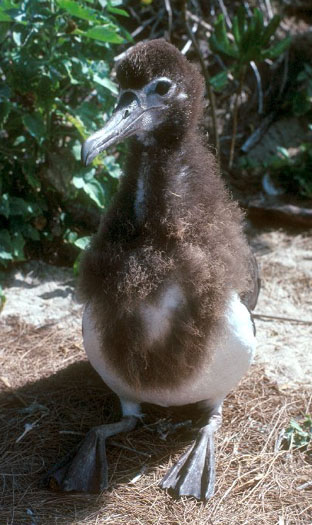
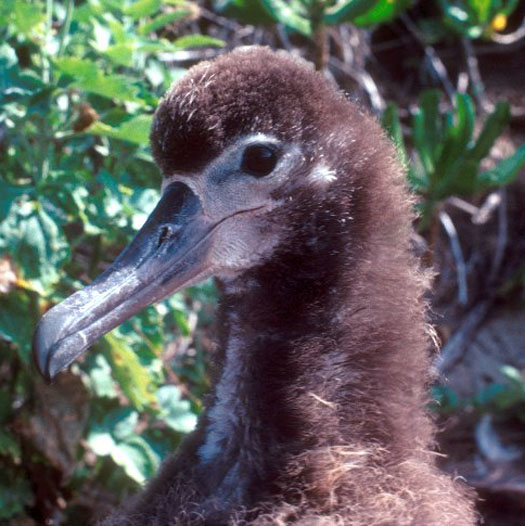
Over the weeks we were there, the down gradually disappeared as the birds started showing their adult plumage.
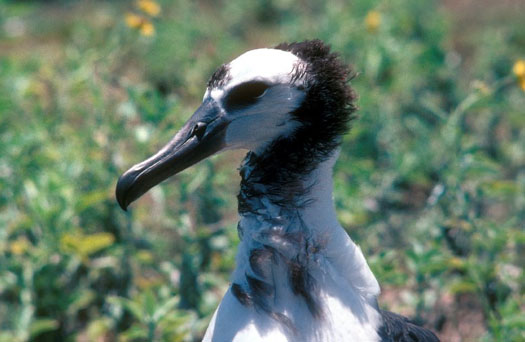
But the chicks continued to beg for food from their parents.
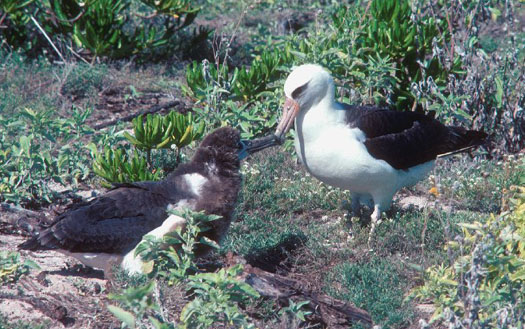
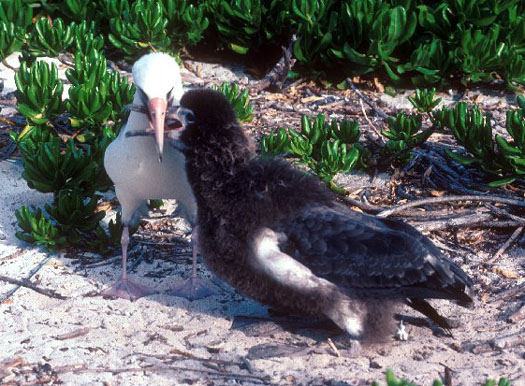
Groups of the adults would get together for conversations.
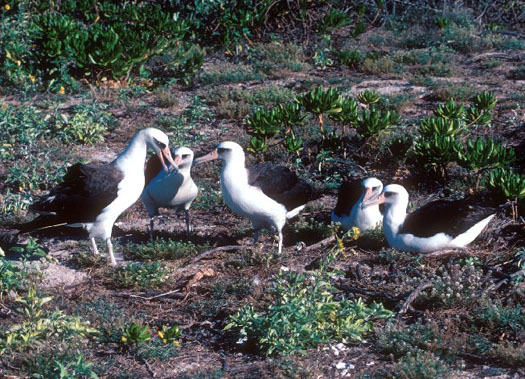
Even with the chicks near adulthood and the next mating season some time away, the adults seemed to spend a lot of time practicing courtship. The variety of sounds and comical antics they make during these sessions is just amazing. It is no wonder they are commonly called "gooney birds."
